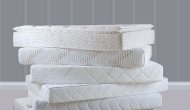Within the world of sleep science, there's an epic face-off that often evades people's attention. It's a battle between two crucial factors significantly affecting sleep quality: motion isolation and mattress responsiveness. So, we will unravel the myths and shed light on these pivotal factors contributing to restful sleep.
In our fast-moving world, sound sleep is often considered a luxury. Many people prefer mattresses that isolate movement, allowing them to sleep undisturbed by their partner or pet. Yet, the technicalities of motion transfer make achieving this a bit more complicated.
At first glance, motion isolation and mattress responsiveness may appear like technical terms used only by sleep specialists or mattress manufacturers. Understanding these terms and their effects is helpful when searching for a mattress that meets your sleep requirements.
Overview
- Myth 1: The Best Mattresses are the Ones with Maximum Motion Isolation
- Myth 2: Responsiveness and Motion Isolation are the Same Things
- Myth 3: A Mattress Can't Be Both Highly Responsive and Good at Motion Isolation
- Conclusion
- FAQ
Myth 1: The Best Mattresses are the Ones with Maximum Motion Isolation

Good mattresses have motion isolation, but other factors also affect sleep quality. A mattress can have excellent motion isolation, but it doesn't necessarily mean it provides the ultimate sleeping experience. Elements like support, comfort, temperature control and durability are just as, if not more important, and a mattress that's great at isolating motion might perform less well in these other areas.
For example, a mattress with exceptional motion isolation could be too soft, leading to insufficient support. Improper alignment of the spine can cause discomfort and pain in the body. Reduced motion transfer cannot fix this issue. Likewise, a mattress with excellent motion isolation might retain heat, leading to a hot, restless night.
Moreover, a mattress that prioritizes motion isolation can sometimes exaggerate this feature, resulting in decreased responsiveness. If a mattress isolates motion too much, it might not adapt quickly enough to your movements during sleep. This rigidity can make the mattress uncomfortable, especially for those who frequently shift positions during sleep.

Motion isolation is important when choosing a mattress. However, it should not be the sole factor to consider. Instead of focusing solely on motion isolation, it should be evaluated along with other important mattress features. A good mattress offers excellent motion isolation, exceptional support, comfort, ideal temperature control, durability, and responsive flexibility.
In pursuing a peaceful, rejuvenating sleep, it's vital to consider all these factors. Motion isolation is undoubtedly a significant puzzle, but it's part of the bigger picture. After all, the best mattress isn't the one that excels in just one area but the one that provides a balance of features to ensuring a good night's sleep.
Myth 2: Responsiveness and Motion Isolation are the Same Things

In the quest for the ideal mattress, motion isolation and responsiveness are two significant qualities often considered. These terms are frequently used interchangeably, which can lead to misunderstanding. It is important to understand the differences between these traits when choosing a mattress that meets your needs. This will ensure that your investment in sleep quality is worthwhile.
Motion isolation refers to a mattress's capacity to confine movement to a specific area, thus reducing its transfer across the mattress. If you share a bed with a partner that tends to toss and turn in their sleep, you will appreciate the importance of good motion isolation.
A good mattress isolates movement so it doesn't disturb the other parts of the bed. This trait is great for people who wake up easily or sleep next to someone with different sleep habits or bodies. For instance, if one person frequently shifts positions or gets up at night, the other person can still sleep peacefully.
In contrast, responsiveness refers to a mattress's ability to adjust and conform to the sleeper's movements and body shape. A highly responsive mattress quickly returns to its original shape after removing pressure. This trait especially benefits individuals who move a lot or frequently change their sleeping positions. A responsive mattress can quickly offer the necessary support and comfort, instantly adapting to the sleeper’s shape and movements.

To illustrate the difference between motion isolation and responsiveness, picture dropping a bowling ball onto two mattresses. On a mattress with high motion isolation, the bowling ball would create a limited indentation where it landed, leaving the rest of the surface unaffected. On a highly responsive mattress, the dent made by the ball would vanish almost instantly when the ball is removed, indicating the mattress's high adaptability as it swiftly returns to its original shape.
Though motion isolation and responsiveness have unique advantages, it’s crucial to remember that neither trait is inherently better. Instead, each serves a distinct function, and their significance varies depending on the individual sleeper's needs and preferences.
Above all else, a top-notch mattress should provide excellent pressure distribution, which is how a mattress manages pressure for maximum comfort and support. Motion isolation and responsiveness are two methods a mattress uses to achieve this.
Motion isolation helps to avoid sleep interruptions caused by movement on the mattress. At the same time, responsiveness ensures continuous comfort and support by swiftly adjusting to changes in the sleeper's position or movements. Motion isolation and responsiveness both contribute to the quality of a good mattress.
Myth 3: A Mattress Can't Be Both Highly Responsive and Good at Motion Isolation

In the past, innerspring mattresses were considered responsive but lacked motion isolation, while memory foam mattresses were praised for their motion isolation but criticized for their lack of responsiveness. This notion led to a belief that a mattress couldn't excel at both aspects simultaneously.
As technology advances and materials evolve, the traditional dichotomy of soft vs hard mattresses is a thing of the past. Many manufacturers have successfully fused the best of both worlds thanks to cutting-edge innovation into hybrid models.
Hybrid mattresses are a blend of innerspring coils and foam layers or latex. This combination gives them the best of both worlds: the bouncy springs' responsiveness and the foam's motion-isolating properties. Thus, they quickly adapt to your shifting sleeping positions while preventing disturbances caused by your partner's movements.

Pocket coils, often found in hybrid mattresses, are worthy of consideration. Each spring is wrapped individually, so a person's movements do not affect the entire bed.
Plus, these springs skillfully adapt to fluctuations in pressure as you shift positions during sleep. Consequently, you obtain responsiveness and support, ensuring a peaceful slumber.
Memory foam is renowned for isolating motion but has come a long way. Thanks to the introduction of open-cell and gel-infused variants. The material is now more breathable and responsive while retaining outstanding motion isolation qualities.
It's a common misconception that a mattress can't deliver fast responsiveness and excellent motion isolation simultaneously. Several modern mattresses are made to perform well in both aspects, granting sleepers undisturbed rest without sacrificing motion adaptability.
Regarding bedding, the key lies in understanding your unique sleep needs and preferences and selecting a mattress that matches those specifications.
Conclusion
Motion isolation is important for a mattress, but it's not the only thing that affects sleep quality. A mattress can have great motion isolation but doesn't automatically guarantee an excellent sleeping experience. Features like support, comfort, temperature balance, and durability are just as essential, if not more, and a mattress that's good at motion isolation might perform poorly in these areas.
For example, a mattress with great motion isolation could be too soft, resulting in insufficient support. Bad spine alignment can cause body pain and discomfort. However, the benefit of less motion transfer may not outweigh these negative effects. Likewise, a memory foam mattress with high-quality motion isolation could still sleep hot, leading to a warm, restless night.
Moreover, a mattress that heavily focuses on motion isolation might overstate this feature, reducing responsiveness. If a mattress isolates motion too much, it might not adapt quickly to your sleep movements. This lack of adaptability can make the mattress uncomfortable and inflexible, especially for those who frequently shift positions at night.

Therefore, it's clear that while motion isolation is an essential factor when selecting a mattress, it shouldn't be the only one. Instead of evaluating motion isolation separately, it should be weighed up along with other essential mattress features. A versatile mattress has good motion isolation, support, comfort, temperature control, durability, and flexibility.
It's important to note that neither motion isolation nor responsiveness is inherently better. Each has unique perks, and their importance hinges on the sleeper’s needs and tastes. It's important to consider these features together with other factors like support, comfort, temperature neutrality, and durability. It also important to consider body types, sleeping position, and other personal needs when selecting a mattress.
Understanding the ongoing battle between motion isolation and mattress responsiveness can greatly improve your quest for a good night's sleep. While these factors might sound daunting initially, understanding their implications can pave the way for better sleep health.
FAQ
Q: What is the best type of mattress for movement isolation?
A: Memory foam mattresses are typically the best motion isolation mattresses. Pocket coil and hybrid mattresses also offer great motion isolation.
Q: How do you stop or reduce motion transfer in bed?
A: Having a proper mattress foundation can help reduce motion transfer. Sometimes sleep disturbance can be caused by a poor quality or damaged bed frame. A good mattress topper can also help. To stop motion transfer completely, you might need to consider upgrading your mattress.
Q: What does responsiveness mean in a mattress?
A: Responsiveness refers to how quickly a mattress adapts and responds to your body's movements. Continuous coil and pocket coil mattresses are the most responsive.
Q: Do only soft mattresses provide motion isolation?
A: Motion isolation is a not dependent on a mattresses firmness levels as it is on mattress materials. Pocket coil and memory foam mattresses typically provide better isolation then continuous coil or natural latex mattresses.
Q: Does a mattress need edge support?
A: If you like to sit on the side of the bed while getting ready, consider a mattresses edge support. Edge support refers to the amount of resistance along the edges of your mattress. Memory foam mattresses typically provide less edge support although their are some models that specifically address this issue.










